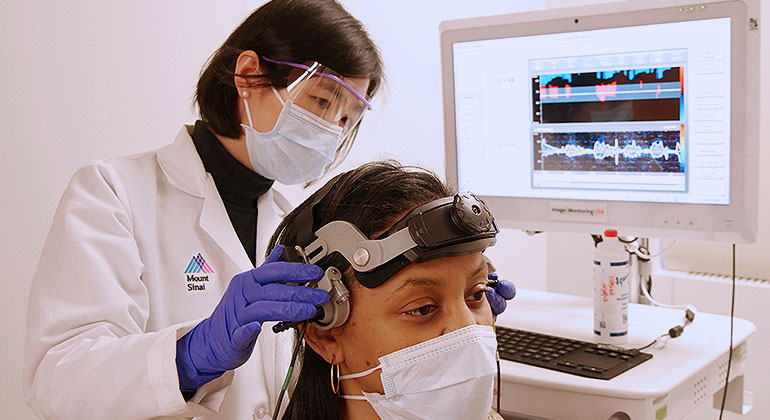About Stroke


Stroke, the fourth leading cause of death in the United States, is a brain injury caused by an interruption of blood flow to the brain. Brain tissue that does not get oxygen and nutrients from blood can die within minutes, causing sudden loss in bodily functions. Anyone exhibiting any symptoms of stroke should be seen by a doctor immediately to lower the risk of future disability and give you the best chance at making a full recovery.
Symptoms of Stroke
To get treatment as quickly as possible, you must first “B.E. F.A.S.T.” in recognizing the following symptoms:
Balance – Loss of balance, dizziness, difficulty walking
Eyes – Dimness or loss of vision, particularly in one eye
Face – Facial droop or numbness, uneven smile
Arm and leg – Extremity weakness or numbness, particularly on one side
Speech – Slurred speech, trouble speaking or understanding
Time - Time to get help, while noting the time symptoms began
Every stroke is a life-threatening emergency. Time is critical. To increase your chances of minimizing a stroke’s impact, take immediate action. Recognize the warning signs and note the time when they first occur. Call 9-1-1 immediately. Tell emergency medical service personnel to take you to a “designated” hospital stroke center or emergency department equipped and staffed to diagnose and treat stroke.
Types of Stroke
The types of functions affected by a stroke depend on the part of the brain that is damaged. There are two types of strokes:
Ischemic strokes, the most common type, occur when blood flow is stopped by an obstruction in the blood vessel. A blockage in a small blood vessel affects a smaller area of the brain. A blockage in larger blood vessels can block the flow of blood to several smaller blood vessels, causing more brain damage. The blockage may be the result of atherosclerosis (a build-up of fatty substances inside the artery), a blood clot that has traveled from another part of the body, or inflammation of the blood vessels.
Hemorrhagic strokes, the other type of stroke, are the result of hemorrhage, or bleeding in the brain or on its surface.
Risk Factors for Stroke
Certain factors increase your risk of stroke but cannot be changed, such as family history, age (particularly being over 55), and race (particularly being of African American, Hispanic, or Asian/Pacific Islander descent). Risk factors that may be within your control include physical inactivity, smoking, and drug abuse involving cocaine, amphetamines, or heroin.
Certain medical conditions can also increase your risk of stroke, such as high blood pressure (hypertension), high cholesterol levels, type 2 diabetes, heart disease, carotid artery disease, and obesity. Management or prevention of these conditions can significantly decrease your risk.
In addition, there are risk factors specific to women, which include previous pre-eclampsia, use of birth control pills (especially if you are over 35 years old and smoke), long-term use of hormone replacement therapy, menopause, and pregnancy.
Diagnosis of Stroke
To diagnose stroke, we perform a physical exam to look for muscle weakness, visual and speech problems, and movement difficulty. If possible, we ask about your symptoms and medical history. We may also perform imaging tests such as computed tomography (CT) scans, CT angiograms, magnetic resonance imaging scan, magnetic resonance angiography, as well as a Carotid Artery Duplex Ultrasound and Transcranial Doppler Ultrasound in our Neurovascular Laboratory. We may also do blood tests to help determine if there is a bleeding problem.